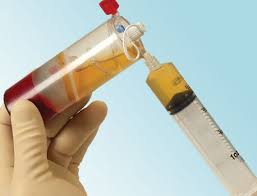Injectable fat grafting is widely used for many aesthetic and reconstructive indications. Considerable debate and research has gone into how to best create predictable fat graft volume survival. Every aspect of harvest, preparation and injection technique has been evaluated with varying opinions amongst surgeon evaluators on what is best.

In the June 2019 issue of the Aesthetic Surgery Journal a paper entitled ‘A Preliminary Clinical Trial Comparing Split Treatments to the Face and Hand With Autologous Fat Grafting and Platelet-Rich Plasma (PRP): A 3D, IRB-Approved Study’ was published. In this paper the author performed a prospective controlled clinical study of ten (10) patients. Each patient received similar volumes of concentrated fat injections to the midface and hands. The fat was either combined with concentrated PRP or saline. Comparisons of baseline and fat volume retention were assessed by 3D photography (Vectra and Visia) and facial skin assessment.
The average % change in mean fat volume of the PRP treated fat had a higher but not statistically significant value after one year than the control treated fat for both the face and hands. Independent evaluators assessing facial and hand volumes saw comparative improvement in both groups that could not be differentiated. No complications occurred other than expected temporary bruising and swelling.
In this prospective controlled study, which was controlled about as much as possible, convincing clinical evidence of PRP facilitated fat graft survival was not demonstrated. PP may ultimately be shown to have benefit in fat grafting but the specific indications are not yet clear.
Dr. Barry Eppley
Indianapolis, Indiana



